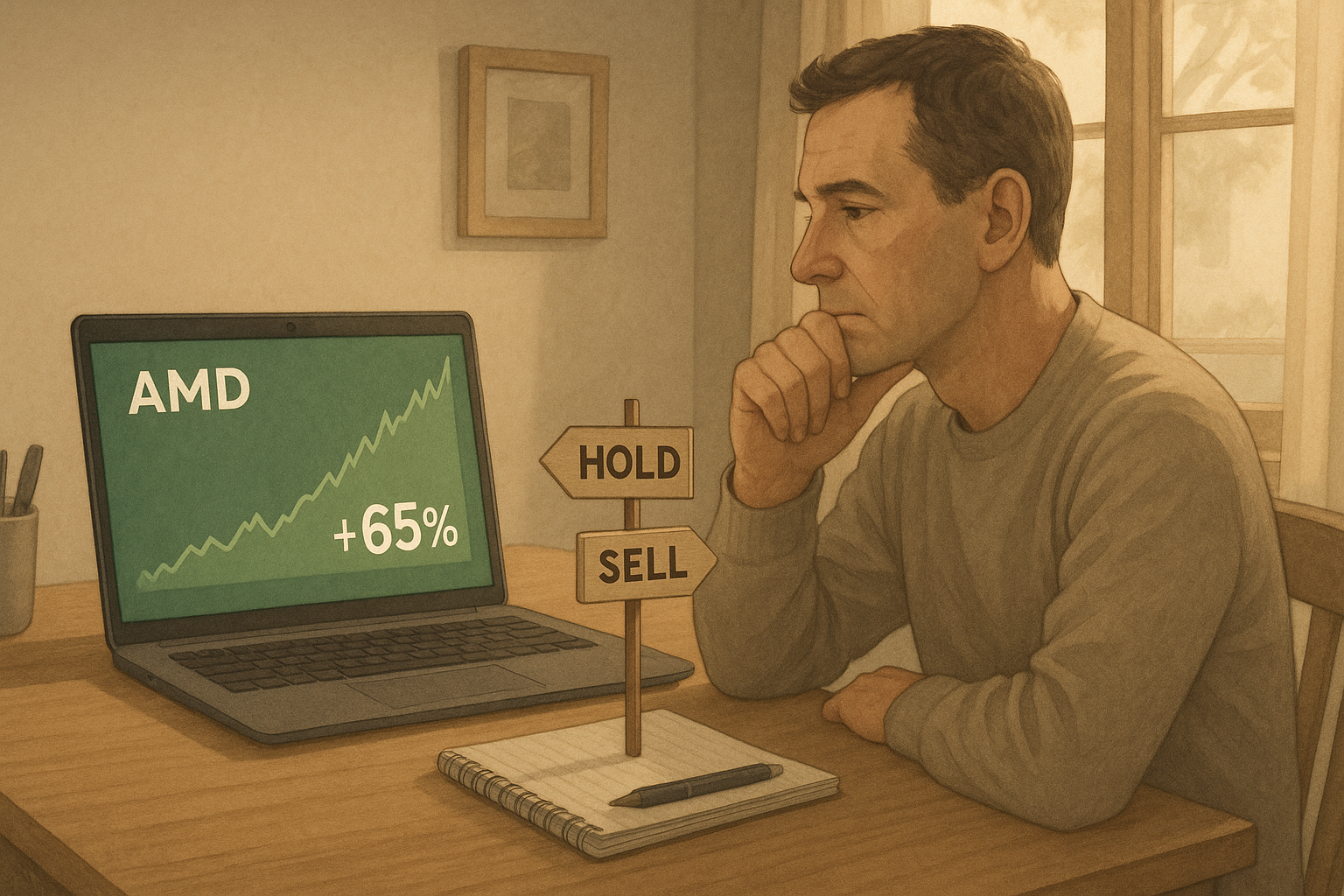A 65% return since July would make anyone's portfolio beam with pride. It's the kind of win that has you checking your brokerage app a little too often, isn't it? But now comes the investor's eternal quandary—take the money and run, or let your AMD winner keep sprinting?
I've seen this scenario play out countless times with tech investors. The euphoria of catching a rocket ship, followed by the creeping anxiety that maybe—just maybe—you should cash in before gravity reasserts itself.
Look, semiconductor investing has always been a wild ride. These aren't your grandfather's blue chips; they're more like blue chips on steroids with a double espresso. AMD's remarkable surge reflects both genuine business momentum and the market's seemingly insatiable appetite for anything AI-adjacent.
The decision you're facing isn't really about AMD at all. It's about you.
What kind of investor are you becoming? That's the question worth answering.
If you're losing sleep watching the stock bounce around, that's your body's way of telling you something. I've interviewed enough successful investors to know that comfort with your positions matters more than maximizing every last percentage point.
The middle path makes a lot of sense for most folks. Take back your original stake (or at least part of it), and let the rest ride. Wall Street types call this "playing with house money," which is just a fancy way of saying you've removed your initial risk while maintaining upside exposure.
Here's something to chew on: The semiconductor industry has always been cyclical. Always. Booms and busts come with the territory. We're currently enjoying quite the boom phase—datacenter spending is through the roof, and AMD has positioned itself beautifully against a stumbling Intel. But cycles haven't been repealed, despite what the current euphoria might suggest.
(I should know. I've covered tech investing through multiple cycles, and the "this time it's different" argument inevitably crumbles when the music stops.)
That said... the AI revolution does feel different from previous tech hype cycles. There's actual substance here—real productivity gains, genuine business applications, tangible economic impact. And AMD has carved out a promising position in this landscape.
The tax angle matters too. If this isn't in a tax-sheltered account, holding longer could mean more favorable treatment. Not investment advice, mind you—just something to consider in your calculation.
Remember that strange psychological phenomenon where early investing experiences shape our patterns forever? If you happened to catch a massive winner right out of the gate, don't let that create unrealistic expectations. A 65% return in mere months isn't normal—it's exceptional. Building your mental model around reproducing that regularly is a recipe for disappointment... or worse, excessive risk-taking.
Portfolio concentration is another factor worth pondering. Has AMD grown to dominate your holdings? If so, that's increased risk, plain and simple. Even if you love the company's prospects, having too many eggs in one basket is asking for trouble.
Here's what I tell friends facing similar dilemmas: Investing isn't binary. You don't have to completely hold or completely sell. Trimming positions is perfectly valid—and often the most psychologically sustainable approach.
Whatever you decide, pat yourself on the back—but not too hard. Market timing luck often masquerades as investing skill, and humility serves investors well.
The most important thing isn't maximizing the return on this particular position—it's developing a consistent, repeatable investment process that aligns with your risk tolerance and time horizon.
In other words, the decision you make about AMD will say more about what kind of investor you're becoming than it will about AMD itself.
And that's the real jackpot worth considering.
